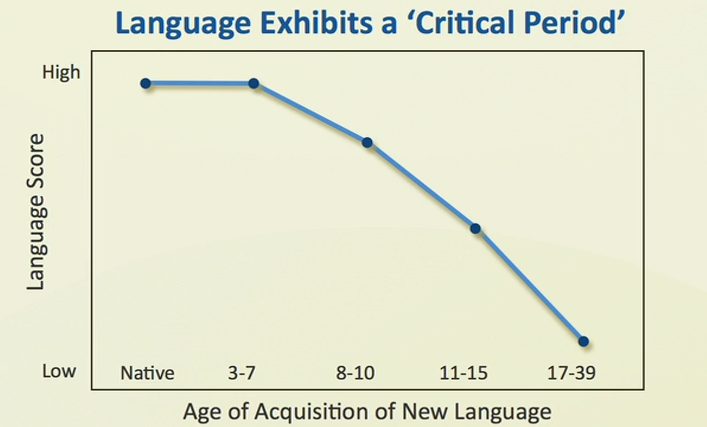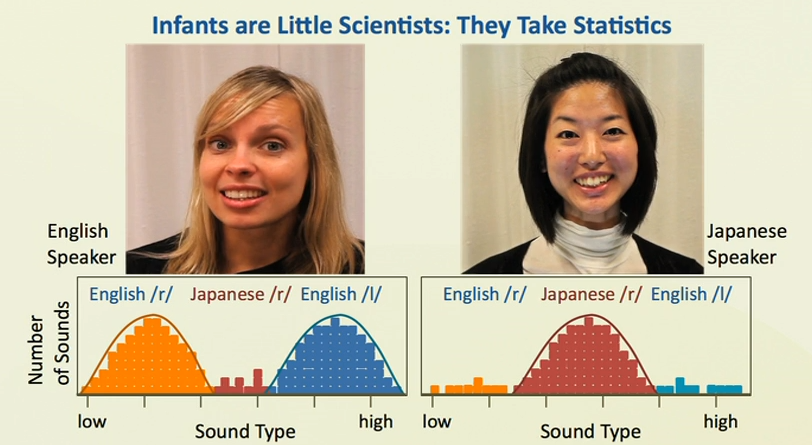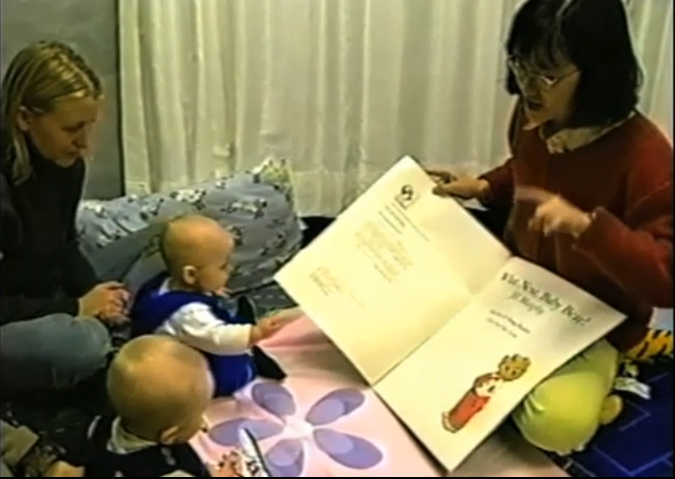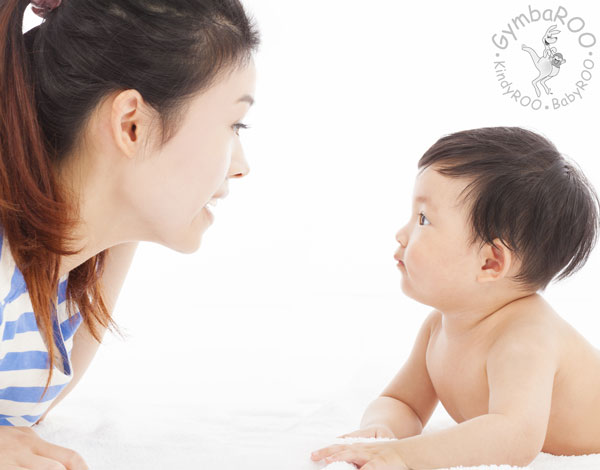Join the thousands of parents already raising smarter, happier babies with our online baby classes: The Active Babies Smart Kids series. Click here.
GymbaROO-KindyROO kids are excelling academically, emotionally, in leadership roles and on the sporting field. Find us at: GymbaROO-KindyROO
Patricia Kuhl shares astonishing findings about how babies learn one language over another – by listening to the humans around them and ‘taking statistics’ on the sounds they need to know.
“The modern tools of neuroscience are demonstrating to us that what is going on in baby’s brains is nothing short of rocket science,” reports the world renowned neuropsychologist Patricia Kuhl in her TEDx talk – “The Linguistic Genius of Babies.” She states: “Babies and children are geniuses at acquiring a second language until they turn seven and then there’s a systematic decline. After puberty, we fall off the map.” Importantly, something incredible is happening in a baby’s first year that is of great significance to learning a language.

See Kuhl’s full TEDx Talk here
The first critical period for language development is the period in which babies try to master which sounds are used in their language. The research undertaken by Kuhl and her team has shown that babies of the world, at six to eight months of age, can discriminate all the sounds of all languages, no matter what country or what language – their brains are totally equivalent to all sound discrimination. Adults can’t do this because we are, what she terms, “culture-bound” listeners. Our brains can only discriminate the sounds of our own language, not those of foreign languages. Access GymbaROO-KindyROO’s online video on how to help develop your baby’s speech and hearing.
So, when do babies turn into the language-bound listeners that we adults are? The answer she says – “before their first birthdays.”

During this first critical period for sound development, babies prepare for exactly the language that they are going to learn. They do this by listening intently to us as we talk and by ‘taking statistics’. Each baby takes on the statistics of the language that they hear. The statistics of each language are very, very different. Kuhl explains: “Babies absorb the statistics of the language and it changes their brains; it changes them… to the culture-bound listeners that we adults are”. We, as adults, are no longer absorbing those statistics. Of course we can still learn a different language, it’s just much harder, takes much longer and the individually specific, just noticeable differences in sound statistics for each language are no longer recognised by our brains, dramatically reducing our chances of ever sounding native in a different language. This shift towards being culture bound listeners begins after six to eight months of life.

To determine if babies could take on statistics from a brand new language during this critical period, Kuhl’s research team exposed six to eight month old American babies, who had never heard a second language, to Mandarin for the first time. The astonishing results showed that these babies did indeed successfully take on this new set of sound statistics. At this age “whatever you put in front of them, they’ll take statistics on”. Their research shows that once this critical period has passed, the ability to learn language material slows down.
On bilingualism, Kuhl’s team proposed: “Bilinguals must keep two sets of statistics in mind at once and flip between them, one after the other, depending on who they’re speaking to.”
The team also trialed this language exposure to babies via human interaction verses TV. The result with the TV – no learning whatsoever! “The social brain is controlling when the babies are taking their statistics. It takes a human being for babies to take their statistics,” says Kuhl.
What parents can do to give their child the gift of a second language
- If two languages are spoken in your home or family, experts suggest that the best way to do this is to adopt a “one person, one language” approach. For instance, if one carer uses the second language exclusively, this helps babies and children separate the two sets of statistics and learn both languages more easily. It is actually possible to successfully introduce as multiple languages simultaneously, provided you can offer enough exposure and need for each one.
- Build a support network. Find others who are raising their children to speak the same language and arrange play dates. You could also find out about bilingual childcare centres playgroups and schools, keeping in mind the importance of the early critical period for sound exposure.
- If you are not a native speaker but would like to expose your little one to another language, you might consider hiring a babysitter or a nanny who speaks another language and stick to the one person one language rule i.e. he/she only speaks their native tongue to your children.
- Books, music, movies, toys, place mats, posters, etc are all great ways to increase exposure, though remember that little to no statistic acquisition is happening without human interaction .
- Most importantly, praise your child about speaking a second language and relax about the finer details of grammar and sentence structure. It is enjoyment, exposure and those sound statistics that are the keys to fostering a rich language experience.
- Read more here: Bilingual Babies. One language or two?
Active Babies Smart Kids – Online Baby Classes
GymbaROO-KindyROO’s online series of baby classes is taking the parenting world by storm! It is highly recommended by doctors, paediatricians, early childhood experts and the Maternal Child and Family Health Nurses Association. This series is being called: “The essential guide for parents”. Join the thousands of parents already playing with their babies from birth, in the best way for brain and body development and laying crucial foundations for future learning. What happens in the first year, not only matters, it matters a lot!
Active Babies Smart Kids BabyROO series – Click here.
Try the first class FREE! Click here to watch our Active Babies Smart Kids Episode 1 – Tummy Time
GymbaROO-KindyROO
Thousands of parents, babies and children are presently involved in our programs and creating rising stars. GymbaROO-KindyROO kids are excelling academically, emotionally, in leadership roles and on the sporting field. Come join all the fun and learning! “GymbaROO – The best decision I ever made for my child.” Classes from 6 weeks old – 7 years GymbaROO KindyROO
Enjoy the following GymbaROO-KindyROO articles
GymbaROO-KindyROO: Who, what, where, why and how
All about GymbaROO-KindyROO’s online baby classes for parents and babies: Active Babies Smart Kids
How to raise a smarter, happier baby
Why active babies make smart kids
Become a GymbaROO-KindyROO franchisee
What parents need to know about creeping and crawling.
Bilingual babies. One language or two?
Baby milestones: A journey, not a race.
Overstimulation. Is your baby at risk of sensory overload?
Bare feet for babies: Catching colds, trimming toenails and tips for first shoes.
What babies really want: Developmentally brilliant gifts for babies.
Click here for more GymbaROO-KindyROO article choices

